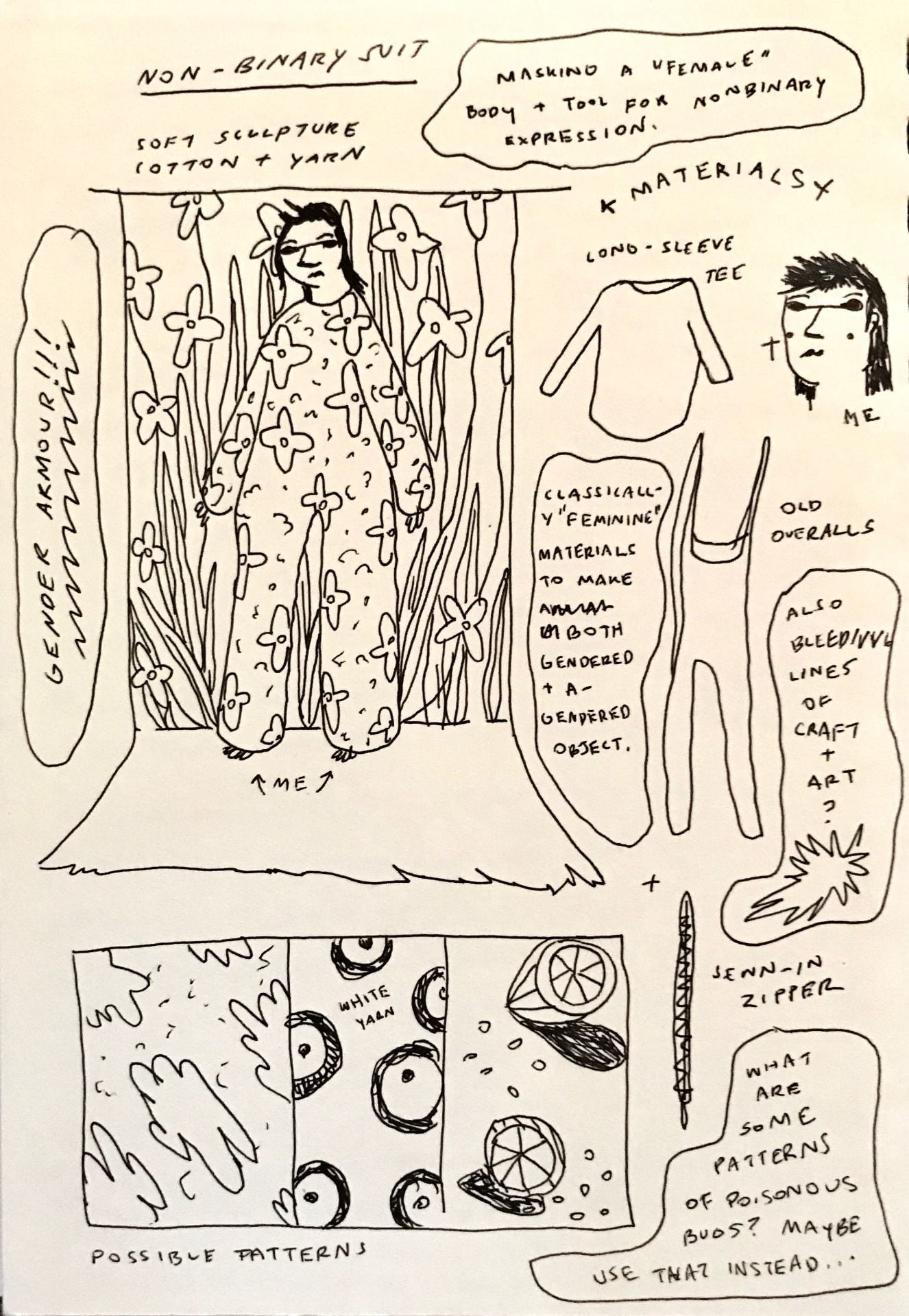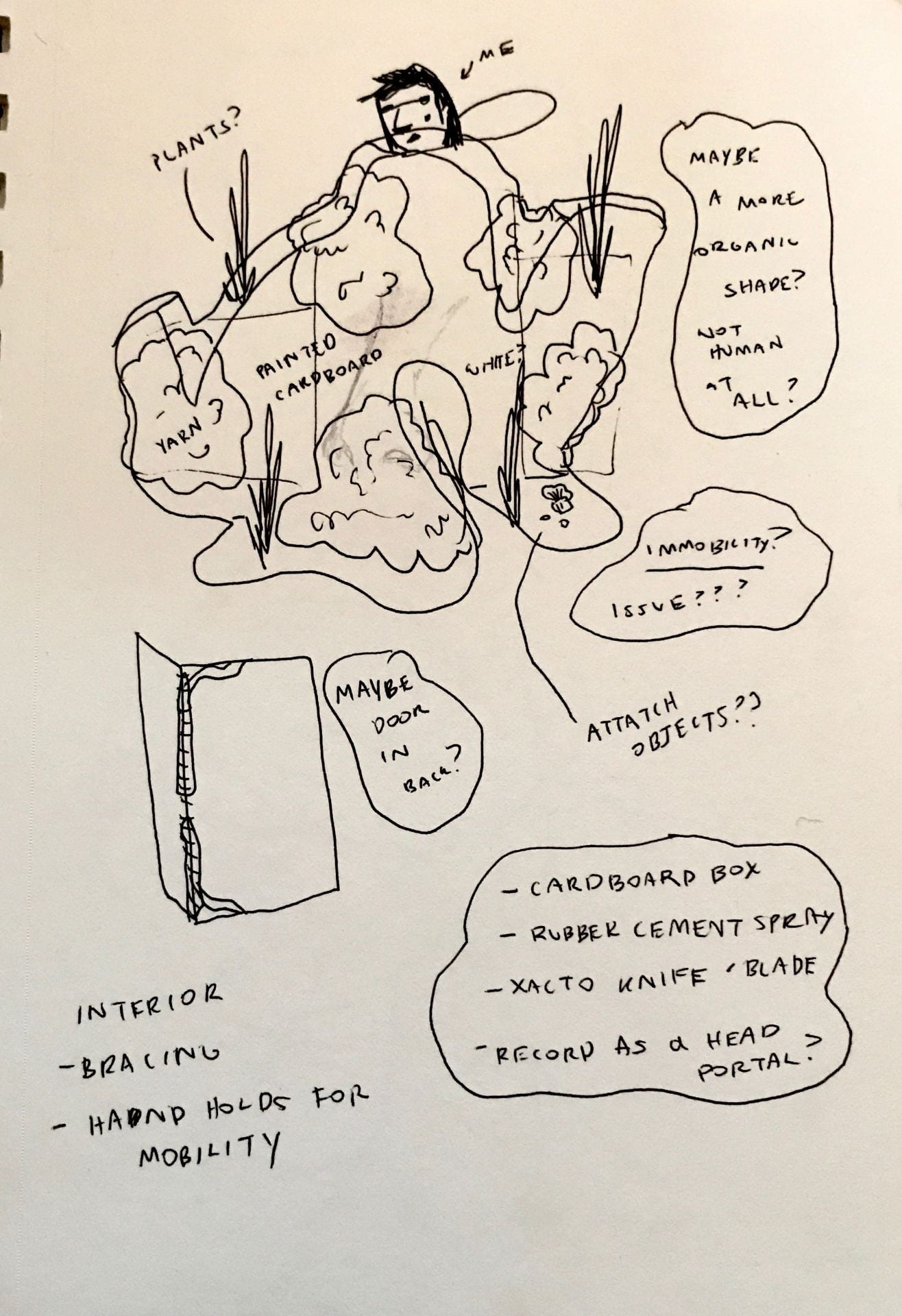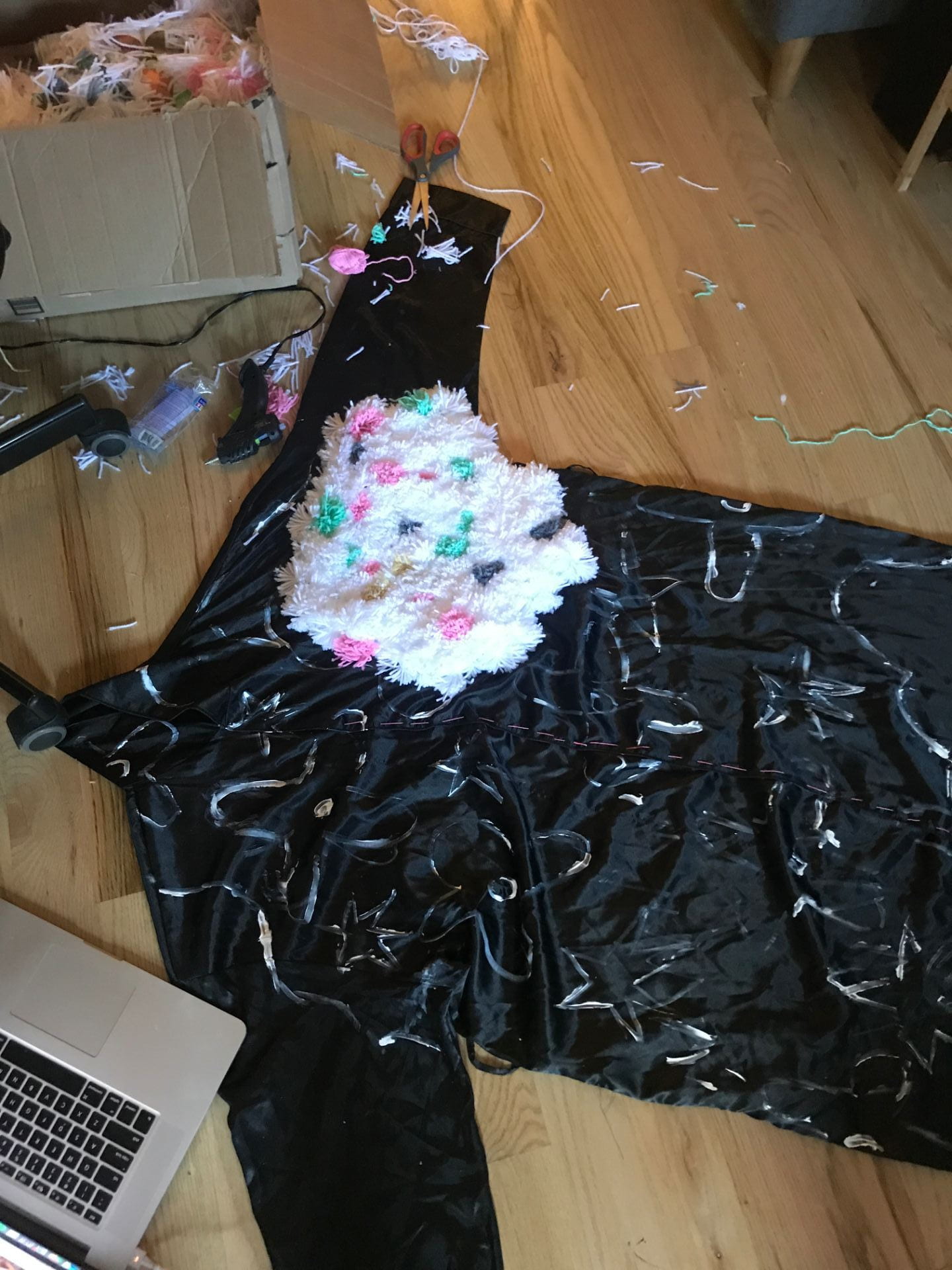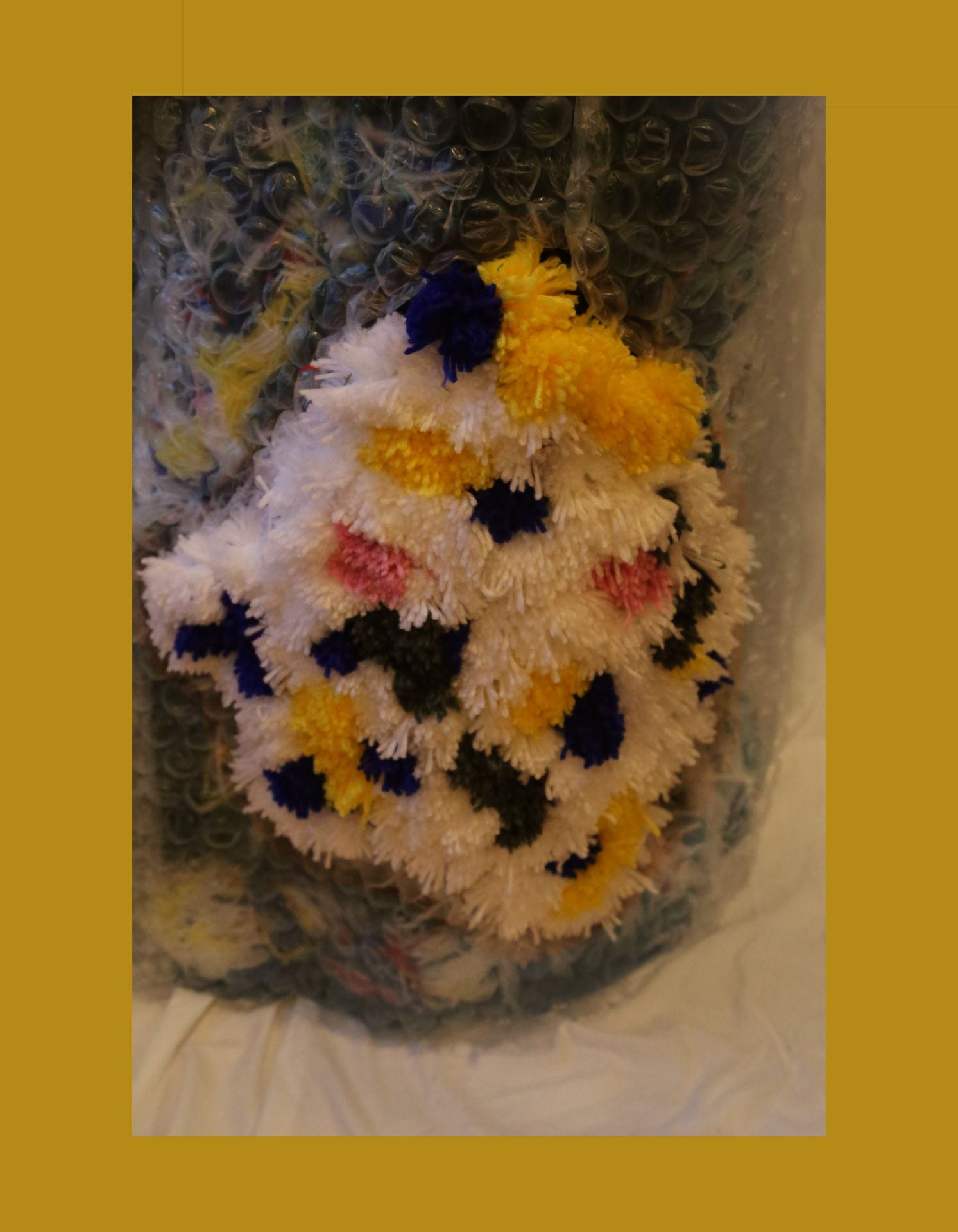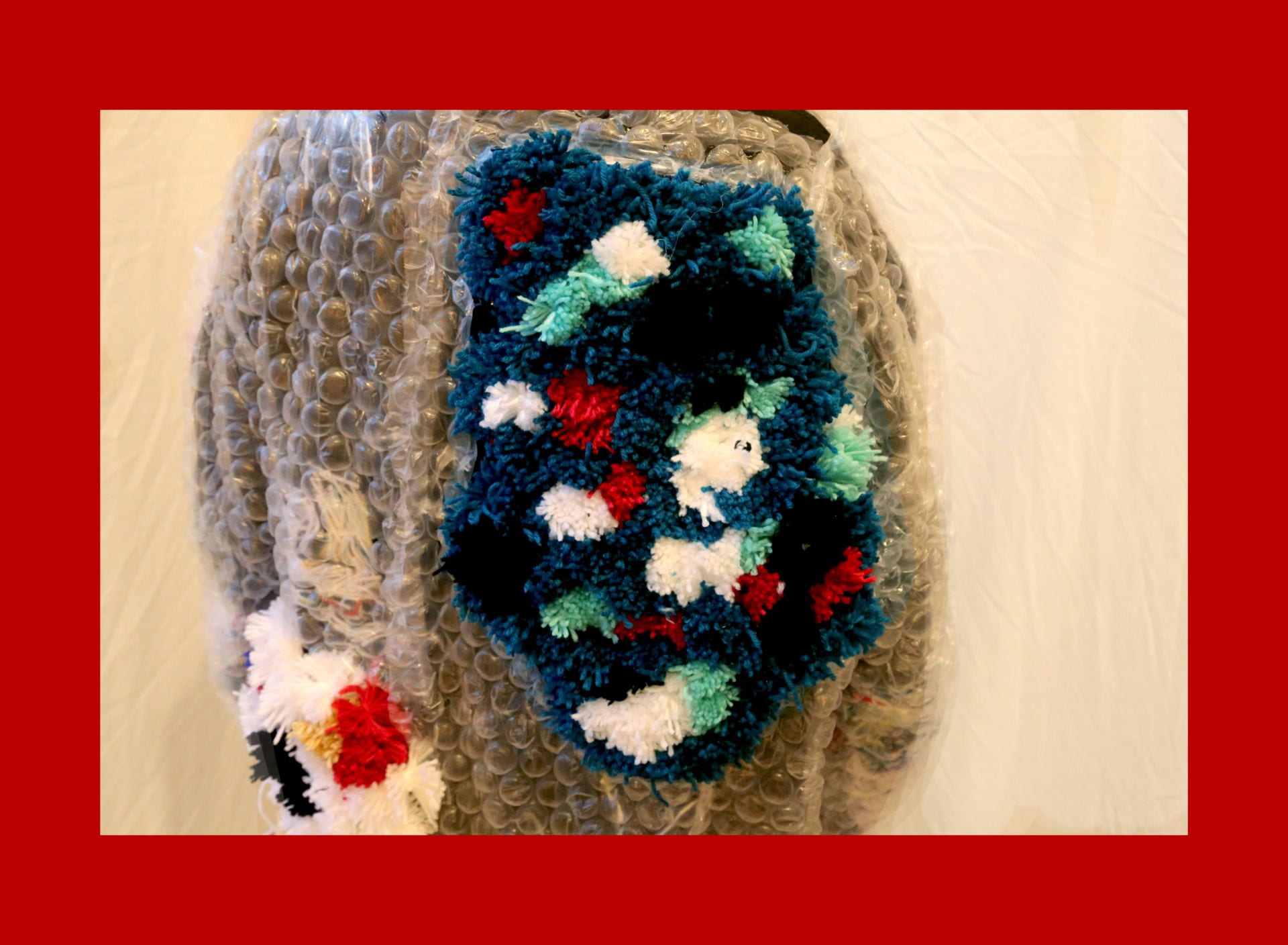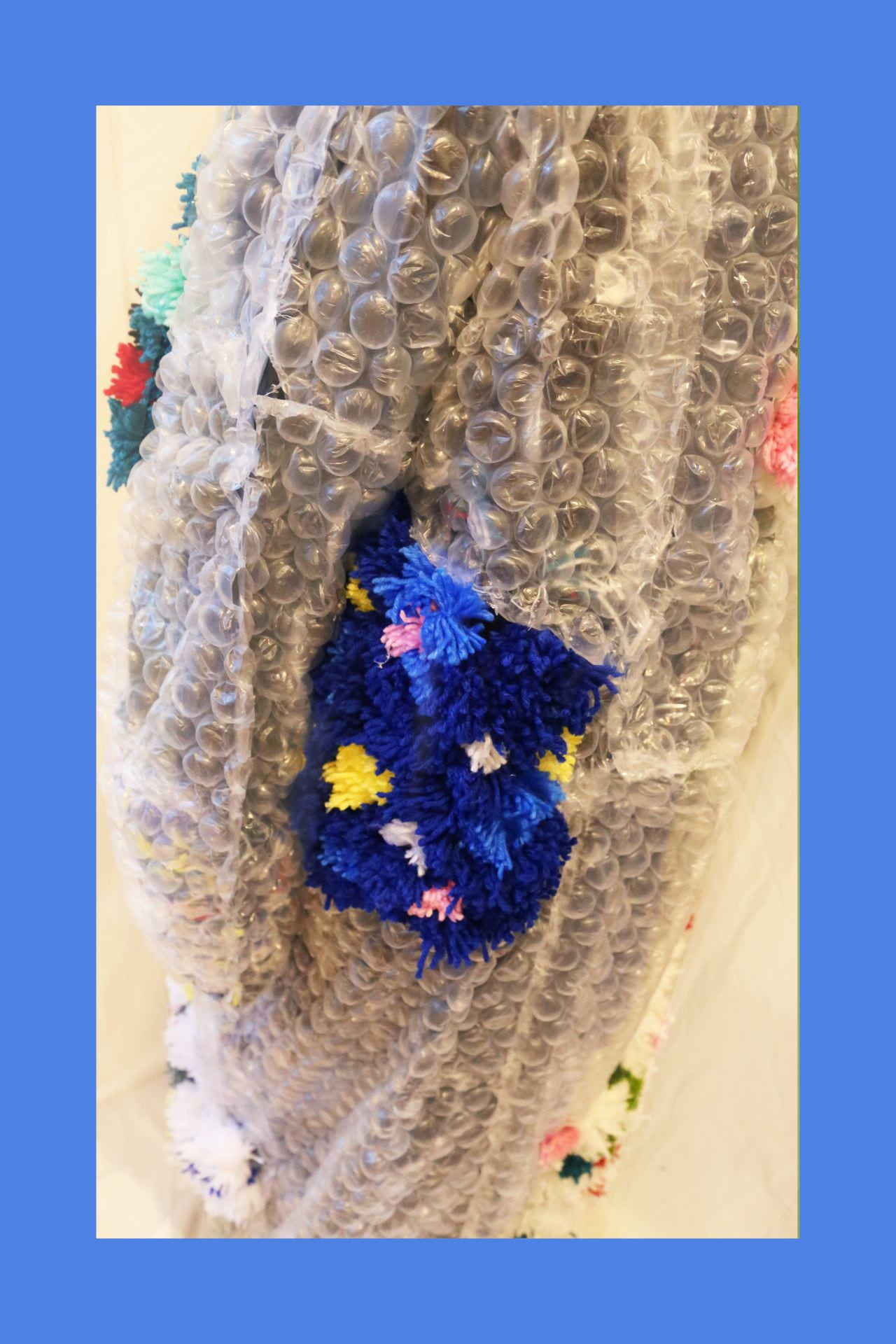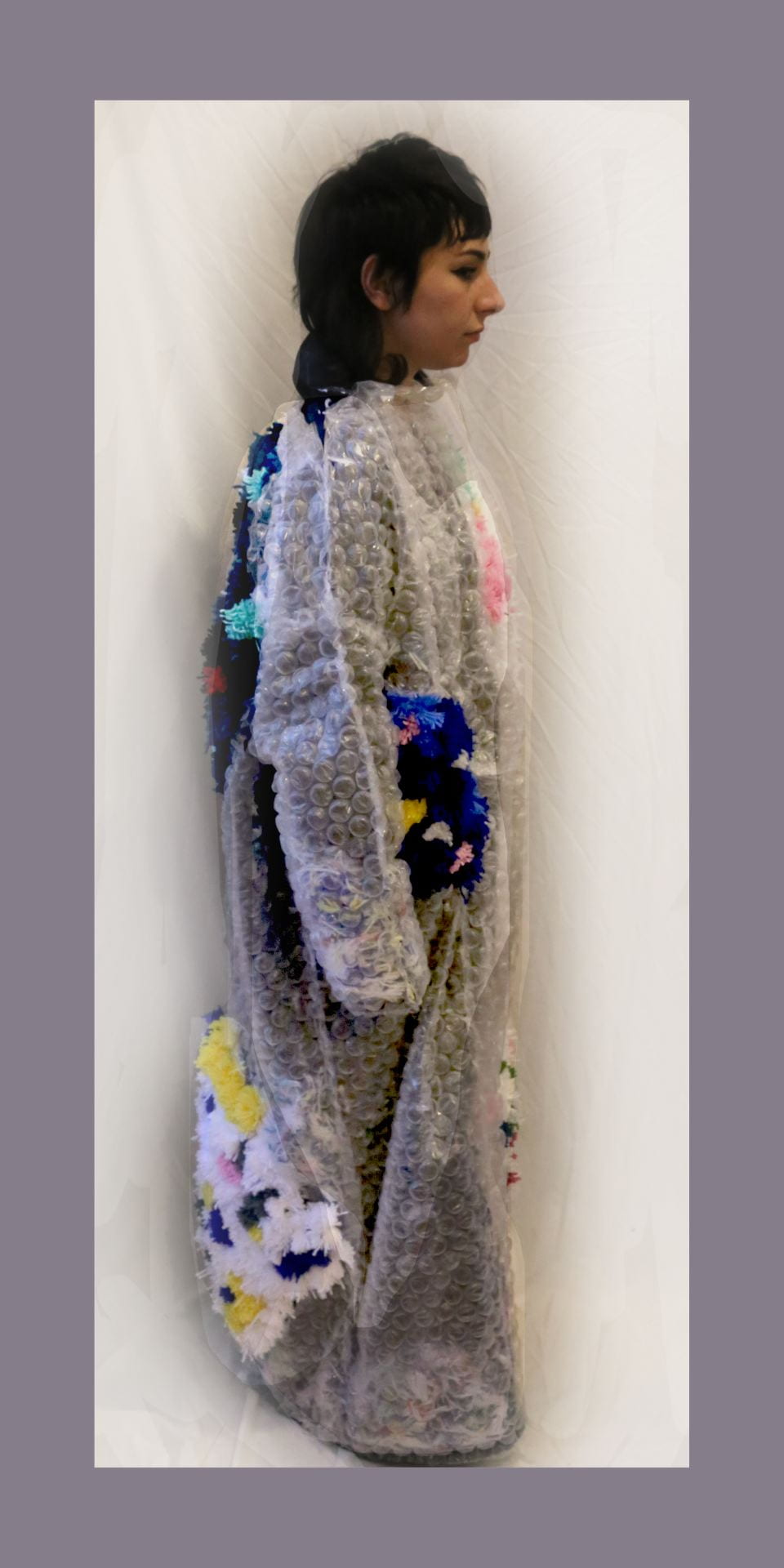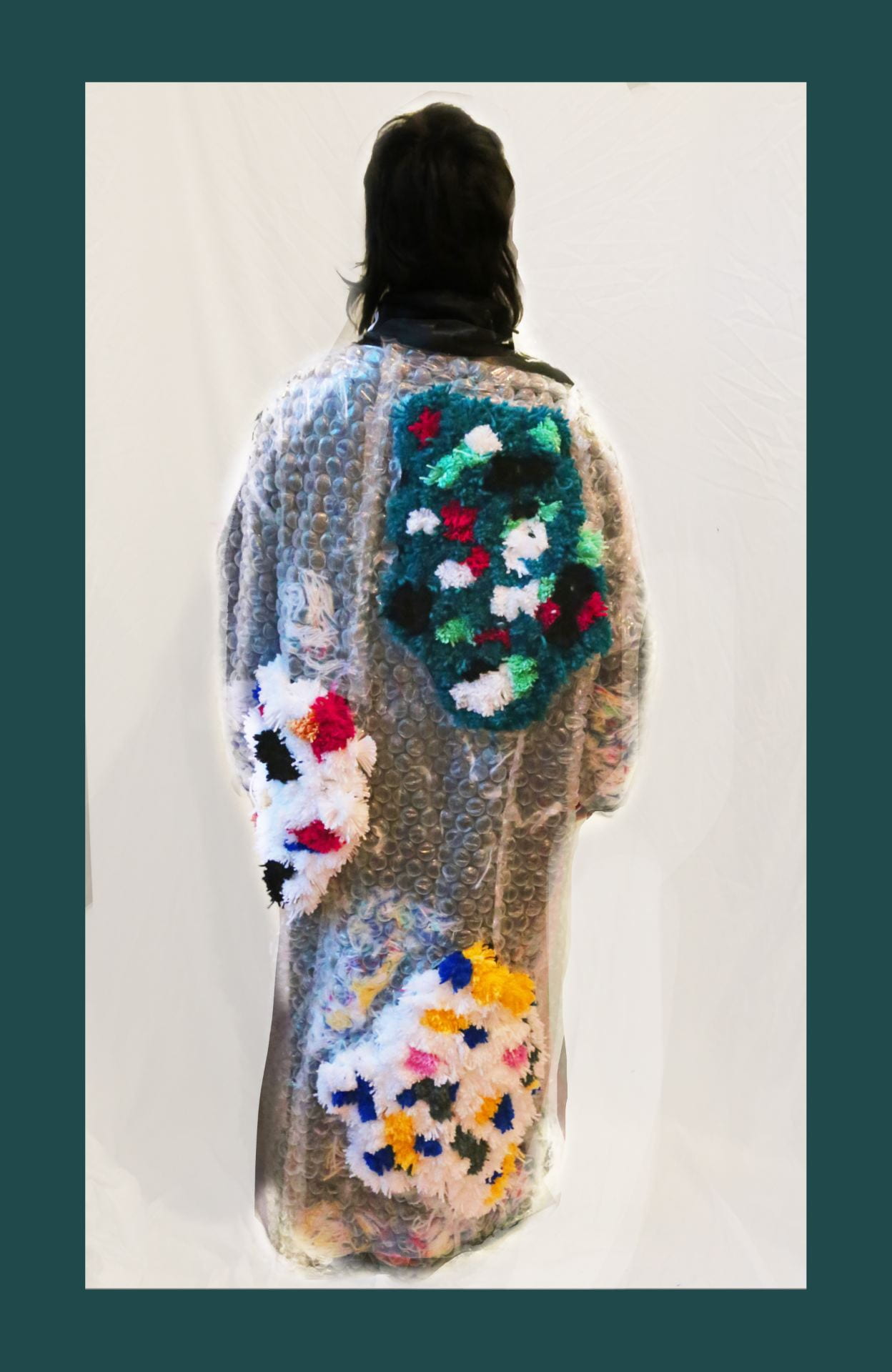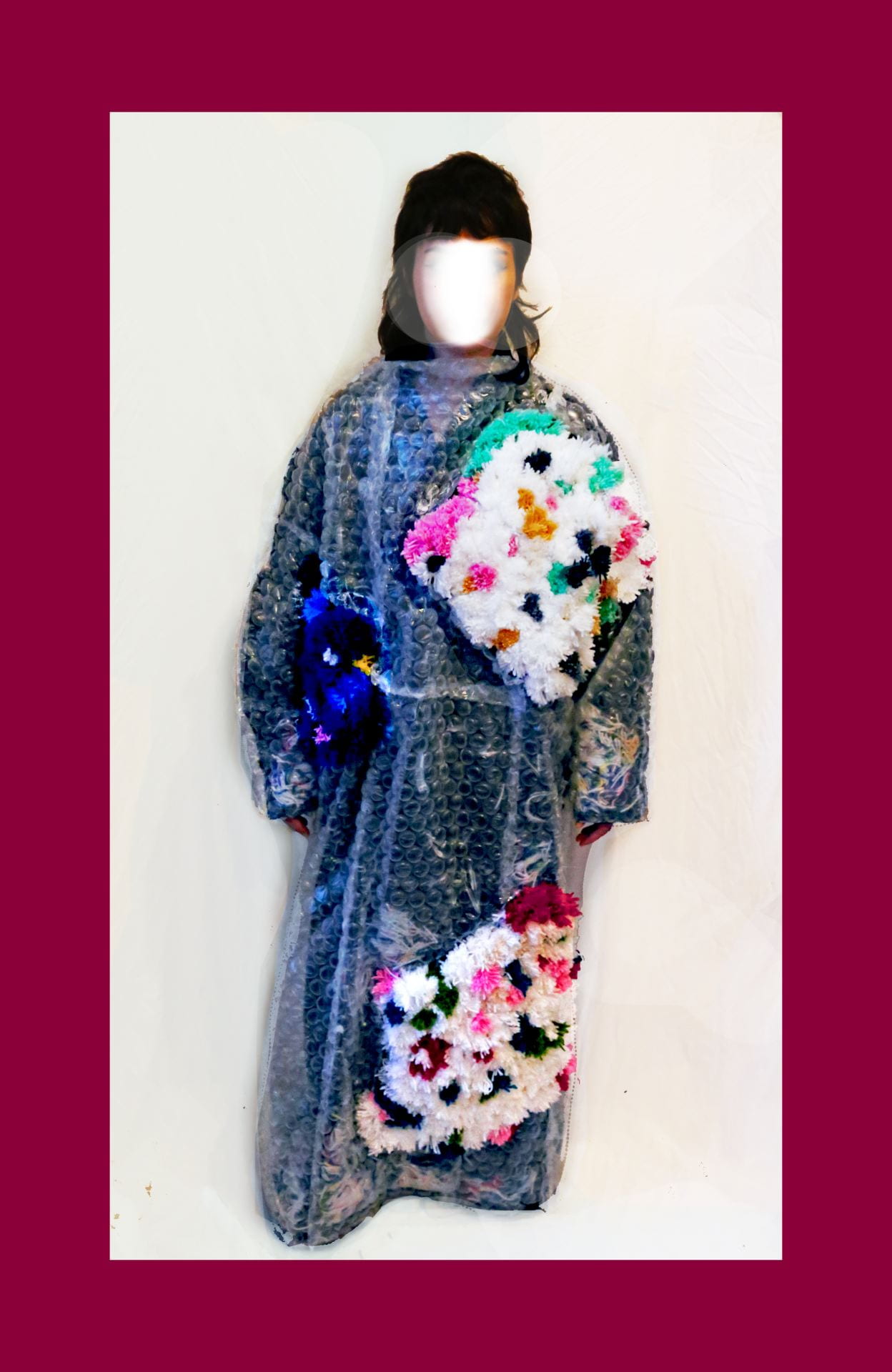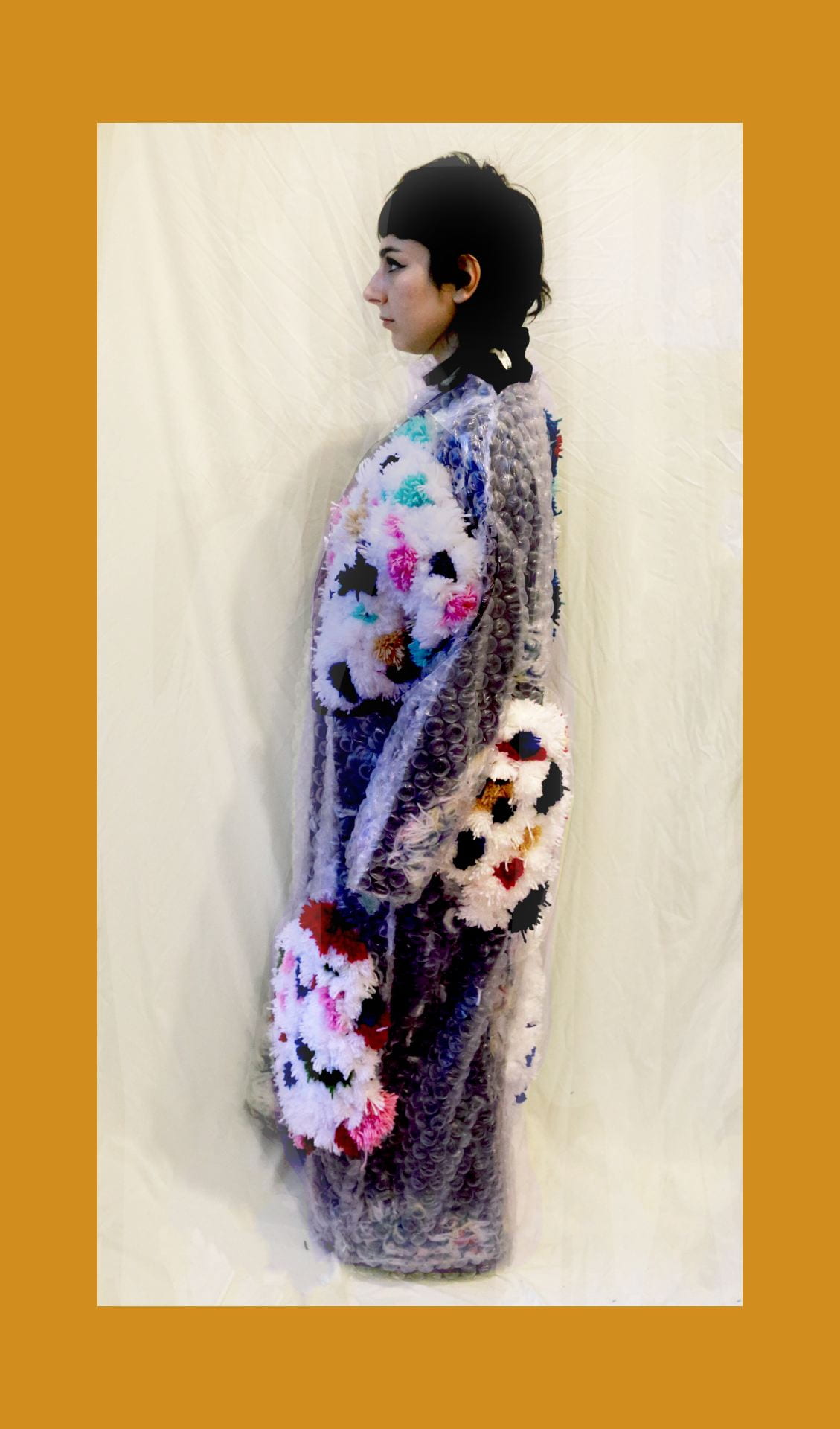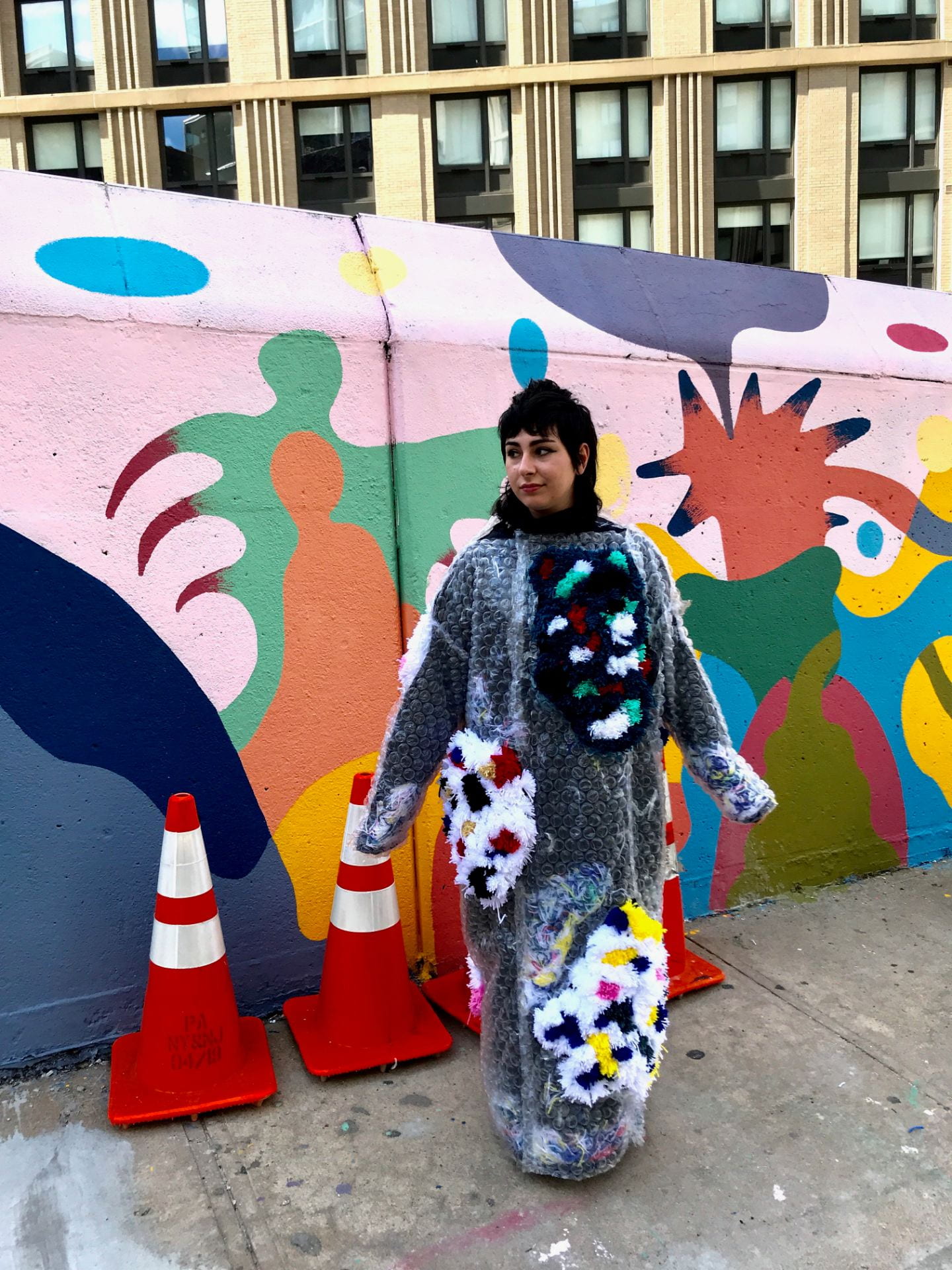Research:
My visual inspiration for this piece comes from my own previous work and also a long history of fiber art works. My first ever encounter with a fiber art piece was Caroline Wells-Chandler, who makes crocheted sculptures about queerness and gender identity. Upon further research, I stumbled upon Sarah Sitskin’s body suits. My idea for this piece was the ability to put on a body mask that would allow me to inhabit a body that aligned with my personal identity politic. Sarah Sitkin’s body suits had a similar concept in which her suits allowed others to try on the masks of other bodies creating the idea of shifting identity as a form of play.
The aesthetics itself somewhat remind me of Nick Cave’s Soundsuits in that a fiber sculpture doubles it’s function as a wearable mask. Nick Cave’s concept is related to my own in the sense that he wanted to create a piece of fashion and sculpture that simultaneously erases identity bias from the viewer, and puts the aesthetic judgement solely on the art and materials themselves.
After even further research, I found artist Alexandra Kehayoglou, who created a technique and style similar to my own. I found Kehayoglou’s work after my concept, but I think it is important to include her work as well. Her work functions as sculptures meaning to evoke landscapes, doubling as sculpture and a form of world building. Her concepts sparked the idea that my personal suit is also a form of world building, as it is a built architecture creating new forms of identity and destroying old ones.
Sarah Sitkin’s Body Suits:
https://www.theverge.com/2019/4/26/18516520/sarah-sitkin-bodysuits-sculptures-superchief-art
Nick Cave Soundsuits:
Caroline Wells-Chandler:
https://carolinewellschandler.com/home.html
Alexandra Kehayoglou:
https://www.thisiscolossal.com/2018/09/native-argentinean-landscape-rugs-by-alexandra-kehayoglou/
Development:
Writing:
When I first became attracted to fiber arts, I quickly understood the connotations associated with its “craft.” Due to societal and cultural conditioning, material and subject are indictors of how an object is valued. Material culture has a distinct capacity to embody symbolic values and to change or reinforce those values in the ways they are presented. The hierarchical order of art based on gender associations historically devalues works made with materials and styles associated with femininity regarding works created and evaluated in the global west. Before coming out as non-binary, I was already interested in the ways in which fiber arts existed within an aesthetic catalog. After sitting with my new identity, I realized there were significant overlaps in the art I create and my new identity politic.
For this first project, “masking” seemed like the perfect way to describe my identity struggles. As gender is performance, masking has become second nature. For this assignment, I wanted my mask to support a gender identity that has no distinct signifiers. Unlike Barthes’s wrestlers, non-binary signifiers are much more complex, and often the person performing its signifiers are still wrongly signified. I envied Barthes’s wrestlers who were neither good nor evil, but still never wrongly convicted of the other. Non-binary masking is often a game of learning the rules to break them. I wear makeup but don’t shave my legs, wear heels but bind my chest. For this particular mask, I wanted to enter a world where non-binary significance could mean a recognizable identity without use of the established rules and the effort to break them.
My preferred medium is in fiber arts, and something felt significant about using a material that is traditionally feminine as a tool for a non-binary structure. One of my favorite artists, Caroline Wells-Chandler has the same philosophy-something within the history of fiber arts protects queerness. In this sculpture, I try to use yarn, not to break the rules of gender, but to build upon it, to use my previous perceived femininity as a new tool a-gendered identity building.
Documentation:
Critique Reaction:
During the class critique, Hazel mentioned all the same complaints I had about my piece. Since we only had two weeks, I felt the project looked a bit rushed. I used hot glue in places where I would normally sew, I didn’t have a chance to do second iterations, and the travel of the piece gave it some wear before the physical critique. Otherwise, I think the piece represented my idea well. Hazel suggested I take some photos outside my apartment to see what other people’s reactions to the piece would be. We noticed that this nonbinary suit was meant to ward off unwanted gender signifiers, yet attracted people to its seemingly interactive nature. Viewers wanted to pop the bubble wrap and feel the yarn. If I were to do this project again, I would give myself a little more time to sew the yarn to the cloak underneath, and perhaps think of a more sustainable material other than bubblewrap (or figure out a way to sew it and create a sustainable material out of it). This week I plan to clean up the edges on the bubblewrap, add in more yarn between the protective layer, and take some photos outside.
